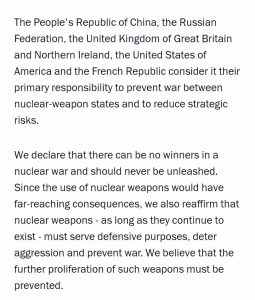The output at Rocky Flats, which at one point during the Cold War hit 1,000 pits per year, dwarfs the modern ambitions of Los Alamos. Still, the new production is expected to generate levels of radiological and hazardous waste that the lab has not experienced. This comes on top of the contamination already present, which the government estimates will cost some $7 billion to clean up.
“We’re endangering our community for an unnecessary arms race that puts us all at risk,” says Jay Coghlan, the executive director of Nuclear Watch New Mexico, a Santa Fe-based watchdog.
By W.J. Hennigan | Photographs by An-My Lê – THE NEW YORK TIMES October 10, 2024 nytimes.com
Opinion: America Is Updating Its Nuclear Weapons. The Price: $1.7 Trillion Over 30 Years.
Letter To the Editor in Response to the Article Above by Dr. Ira Helfand:
Re “The Staggering Cost of America’s Nuclear Gamble,” by W.J. Hennigan (Opinion, “At the Brink” series, Oct. 13):
Mr. Hennigan says, almost in passing, that “nuclear weapons do deter our adversaries.”
There is a lot to unpack in these six words. There certainly are situations in which one country’s nuclear weapons do deter its adversaries. Russia’s threats to use its nuclear weapons have clearly deterred the United States and NATO from doing more to support Ukraine.
But does deterrence guarantee that these weapons will not be used? Because a failure of deterrence will cause a catastrophe beyond reckoning.
A nuclear war between the United States and Russia could kill hundreds of millions of people in the first afternoon, and the ensuing climate disruption and famine could kill three-quarters of humanity over the next two years. Is there any conceivable benefit that can be derived from possessing these weapons that is worth running this terrible risk?
There have been many near misses already during the nuclear weapons era, crises where certain countries actually began preparations to launch nuclear weapons.
As former Defense Secretary Robert McNamara pointed out, we have not survived this far into the nuclear era because we knew what we were doing. Rather, as McNamara put it, “It was luck that prevented nuclear war.”
The idea that deterrence makes us safe is a dangerous myth. As our highest national security priority, we should be actively seeking a world without nuclear weapons. We don’t know if such an effort can succeed; we have never tried. We do know what will happen if deterrence fails.
Ira Helfand
Northampton, Mass.
The writer is a former president of the International Physicians for the Prevention of Nuclear War, which received the 1985 Nobel Peace Prize.






 In response to (the Aug. 13) editorial “Archbishop’s nuclear weapons view needs a homily on reality,” I was one of the speakers at the 75th anniversary commemoration of the Hiroshima atomic bombing, organized by Fr. John Dear, at which Santa Fe Archbishop John Wester eloquently spoke. The editorial declared “neither Wester nor Dear appear to accept the premise there is any deterrent benefit to the nuclear arsenal.”
In response to (the Aug. 13) editorial “Archbishop’s nuclear weapons view needs a homily on reality,” I was one of the speakers at the 75th anniversary commemoration of the Hiroshima atomic bombing, organized by Fr. John Dear, at which Santa Fe Archbishop John Wester eloquently spoke. The editorial declared “neither Wester nor Dear appear to accept the premise there is any deterrent benefit to the nuclear arsenal.”